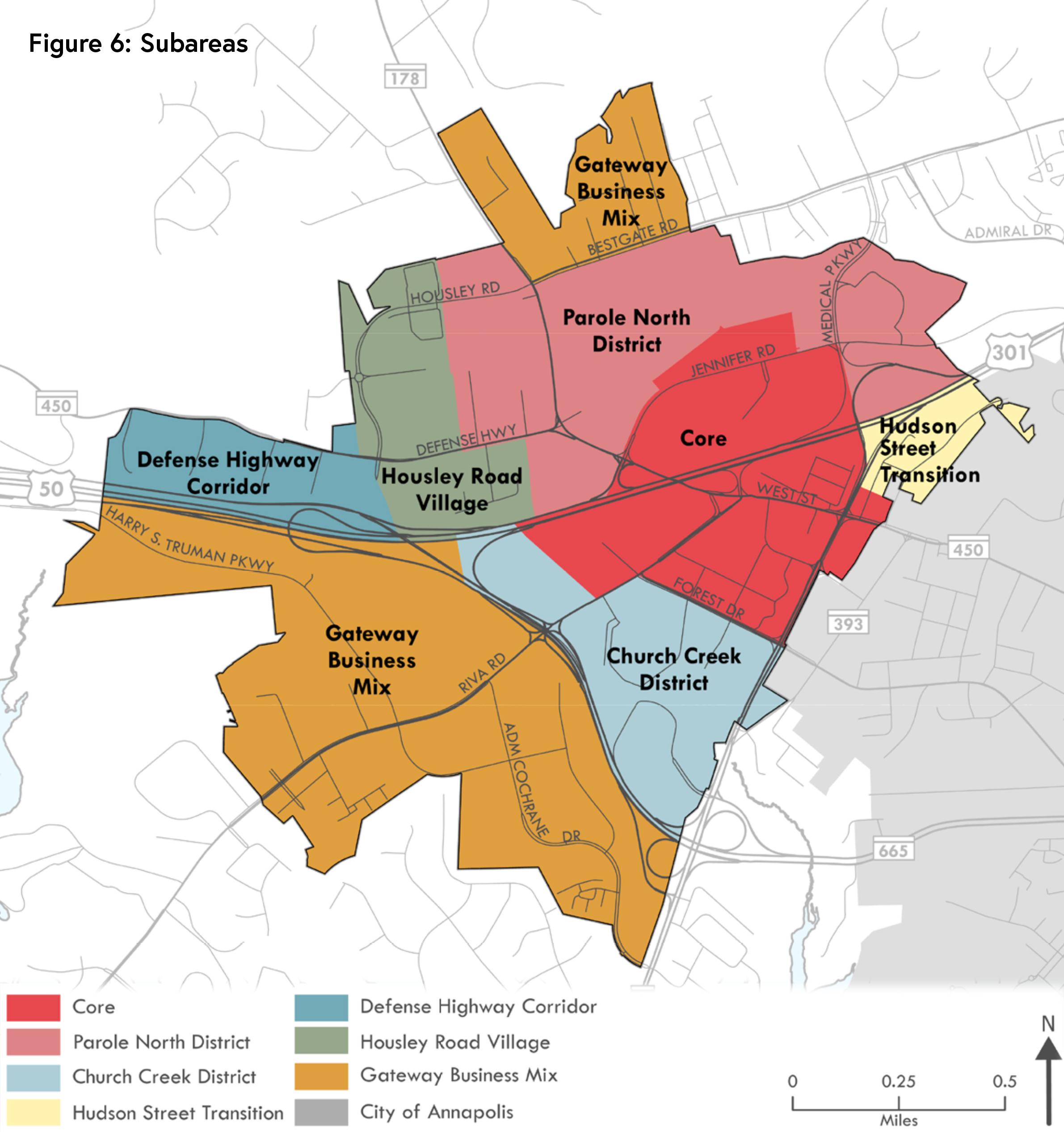The new master plan for Parole Town Center appears to open up opportunities to build taller, denser mixed-use developments and provide developers with greater flexibility to tailor their plans to meet market trends.
 “The master plan appears to be following through on the stated intent for Parole Town Center to accommodate growth,” said Phil Dales, Principal at Dales Associates. Dales represents several clients who own multiple properties within Parole Town Center. Dales, NAIOP Maryland and other industry representatives worked to make several amendments to the master plan.
“The master plan appears to be following through on the stated intent for Parole Town Center to accommodate growth,” said Phil Dales, Principal at Dales Associates. Dales represents several clients who own multiple properties within Parole Town Center. Dales, NAIOP Maryland and other industry representatives worked to make several amendments to the master plan.
Several key changes in the master plan appear to create a more modern, urban and flexible approach to development in Parole. First, the plan eliminates density limits in Parole Town Center.
“It has long been recognized that density is not the best way to create predictable urban form,” Dales said. Instead, the new plan “limits development based on building height and development requirements, such as setbacks, adequate public facilities and the need to respect site features.”
Second, the plan sets more generous height limits for all subareas that make up the town center.
“They are not extreme increases” and developments must limit their height within a 100-foot-wide strip along the edge of town center to avoid overwhelming adjacent residences, Dales said.
However, maximum building height is being increased to eight stories for the town center core; six stories in the Parole North, Church Creek and Hudson Street subareas; and five stories elsewhere. In addition, developers who meet the requirements of an incentive program by including extra public benefits in their development plans, can be permitted to build higher: up to 16 stories in town center core, 10 in Parole North, eight in Church Creek and Hudson Street, and six elsewhere.
Third, it broadens and simplifies the types of public benefits that a developer can provide in order to receive substantial, additional development capacity or relief from other development requirements,” Dales said.
The master plan describes qualifying public benefits as features that “achieve a desirable land use, quality design and public amenities that create the sense of a unified community and an enhanced quality of life in the Parole Town Center.” Those include: enhanced site design, architectural features, streetscape improvements, open areas, environmental restoration projects, and community amenities.
The new master plan allows developers to include any types of products (residential, retail, medical office, etc.) that are permissible in the underlying zoning district, creating heightened opportunities to tailor mixed-use projects to market preferences.
The master plan still presents some uncertainties and challenges. Grandfathering clauses exempt existing buildings from the new master plan requirements for any redevelopment that doesn’t require a site development plan (for example, a tenant fit-out). Advocates for the CRE industry, however, are seeking more thorough grandfathering clauses.
The master plan could also land county staff and developers in some disagreements over what types of developments are appropriate and viable as the county shifts to encouraging a higher degree of urbanization. For example, parking requirements in the new master plan are more tailored to an urban than suburban market.
“There are a few issues where we feel that county staff is being too ambitious with visions of a true urban area when the market is not ready for it yet,” Dales said. “However, the county gave us flexibility on some things. Staff listened to us when we said, in the meantime, don’t stifle redevelopment of the same kind of product that exists there now until the market is ready for an urban product.”